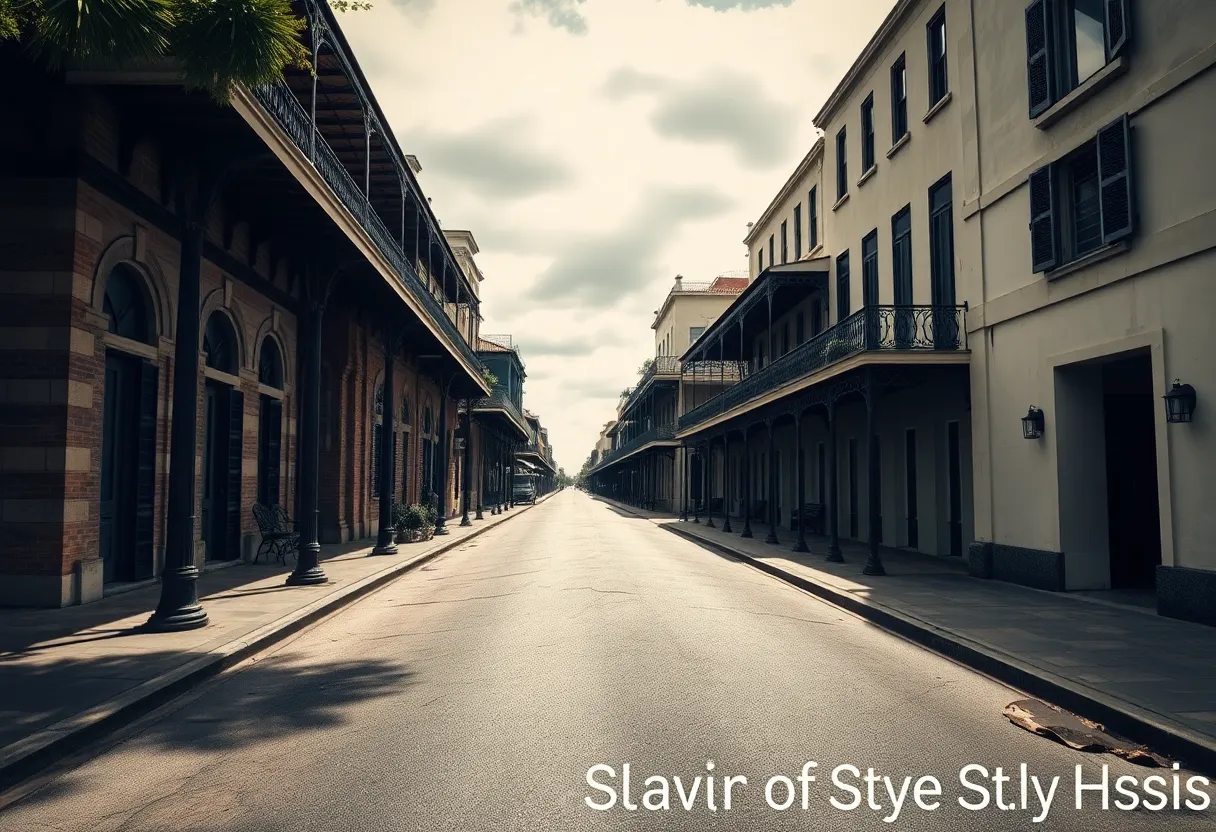News Summary
New Orleans is beginning to address its historical ties to slavery, revealing a stark contrast to its vibrant culture. As a historic hub for the slave trade, many are advocating for more public acknowledgment of this dark past. Efforts include historical markers, commemorations, and educational initiatives to ensure that the legacy of slavery is remembered amidst the city’s celebrations.
New Orleans is revealing its dark history tied to slavery, contrasting sharply with the celebratory culture that the city is known for today. The city, often remembered for its vibrant jazz scene and historic architecture, was once a significant hub for the slave trade, with thousands of enslaved individuals forced to march along Esplanade Avenue in chains.
Historically, the vicinity of Esplanade Avenue, which stretches from the Mississippi River to City Park, contained numerous slave pens, where enslaved individuals were kept before being sold. These pens, described as “foul places,” were notorious for their poor living conditions which attracted vermin and emitted unpleasant odors. The fallout from the slave pens prompted local residents to push for their relocation, reflecting a community that wanted to distance itself from the grim realities of the slave trade.
Before the Civil War, New Orleans was known as the “slave market of the South,” with approximately 135,000 enslaved people bought and sold. The city’s wealth was significantly bolstered by the labor of these individuals, who were integral in not only the sugar and cotton industries but also in constructing critical infrastructure such as levees and streets.
At the heart of this grim history lies the old slave auction block located at the St. Louis Hotel in the French Quarter. Situated under recessed arches and between columns in the hotel’s rotunda, this site stands as a stark reminder of the city’s connection to the dark chapter of American history.
As tourists meander through the picturesque streets of New Orleans today, particularly along Esplanade Avenue and towards jazz clubs on Frenchman Street, many remain oblivious to the historical significance embedded in those very pathways. The tourism narrative of the city largely overlooks the profound impact of slavery on its culture and economy, a neglect that historians note as a reluctance to confront its past.
Efforts to acknowledge the legacy of slavery in New Orleans have grown in recent years. The city marked its 300th anniversary in 2018 by erecting historical markers that highlight its connection to the slave trade, including a marker that commemorates the notorious slave pens where the author of “Twelve Years a Slave,” Solomon Northup, experienced the horrors of being sold.
Additionally, the New Orleans MAAFA Commemoration occurs annually to honor the memory of those affected by slavery. Moreover, a slave marker tour app has been developed to educate the public about the city’s extensive ties to the domestic slave trade. Despite these initiatives, public acknowledgment of slavery’s legacy in New Orleans remains minimal, with few educational tours available that delve into the complexity of this history.
Scholars and local descendants of enslaved individuals advocate for more recognition of the city’s dark past, emphasizing the need for a narrative that encompasses the contributions of enslaved people in shaping New Orleans. Historians argue that the entire city deserves consideration as a memorial to slavery, suggesting that the history of Louisianans’ complicity in the slave trade has largely been obscured by the exuberant culture for which the city is celebrated.
The ongoing work of local citizens highlights the importance of keeping this history alive. As awareness grows, the residents and descendants seek to address the lingering impacts of slavery on current societal structures, ensuring that the painful history is not forgotten amidst the city’s vibrant celebrations of music, food, and culture.
Deeper Dive: News & Info About This Topic
HERE Resources
Nottoway Plantation Fire Causes Devastation in Louisiana
Nottoway Plantation Completely Destroyed by Fire
Louisiana Sugar Cane Industry Thrives Amid Tariff Concerns
Exploring History Through Art in New Orleans
New Orleans’ African Roots Explored in Olufunke Grace Bankole’s Novel
Additional Resources
- La Illuminator: Slave New Orleans
- The New York Times: White Women and the American Slave Trade
- Smithsonian Magazine: New Orleans and the US Slave Trade
- The Economist: Role of Women in America’s Slave Trade
- NOLA.com: New Orleans Sites of Slave Trade
- Wikipedia: Slavery in the United States
- Google Search: New Orleans Slave Trade
- Google Scholar: New Orleans Slave Trade
- Encyclopedia Britannica: Slavery
- Google News: New Orleans Slavery

Author: STAFF HERE NEWORLEANS WRITER
The NEW ORLEANS STAFF WRITER represents the experienced team at HERENewOrleans.com, your go-to source for actionable local news and information in New Orleans, Orleans Parish, and beyond. Specializing in "news you can use," we cover essential topics like product reviews for personal and business needs, local business directories, politics, real estate trends, neighborhood insights, and state news affecting the area—with deep expertise drawn from years of dedicated reporting and strong community input, including local press releases and business updates. We deliver top reporting on high-value events such as French Quarter Festival, New Orleans Jazz & Heritage Festival, and Essence Music Festival. Our coverage extends to key organizations like the New Orleans Chamber of Commerce and Greater New Orleans, Inc., plus leading businesses in energy, healthcare, and education that power the local economy such as Entergy, Ochsner Health, and Tulane University. As part of the broader HERE network, including HEREShreveport.com, we provide comprehensive, credible insights into Louisiana's dynamic landscape.




